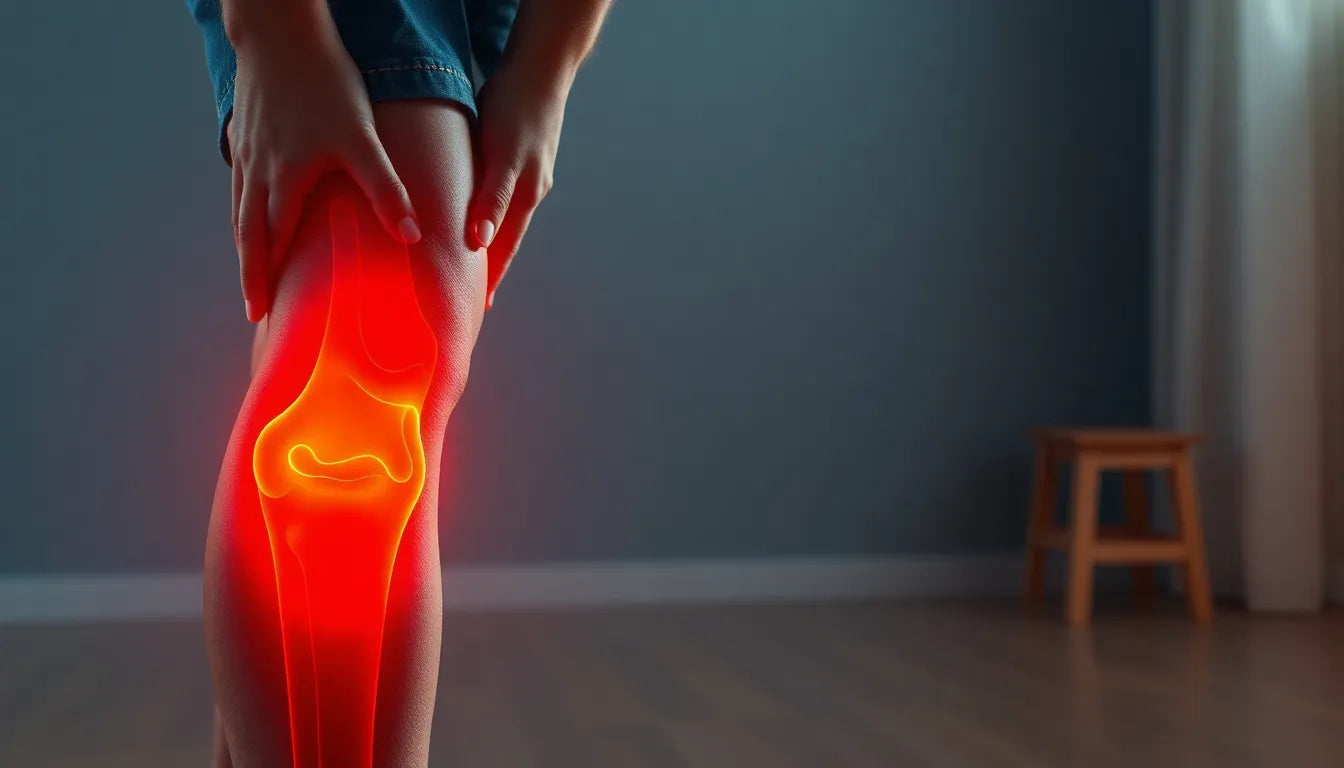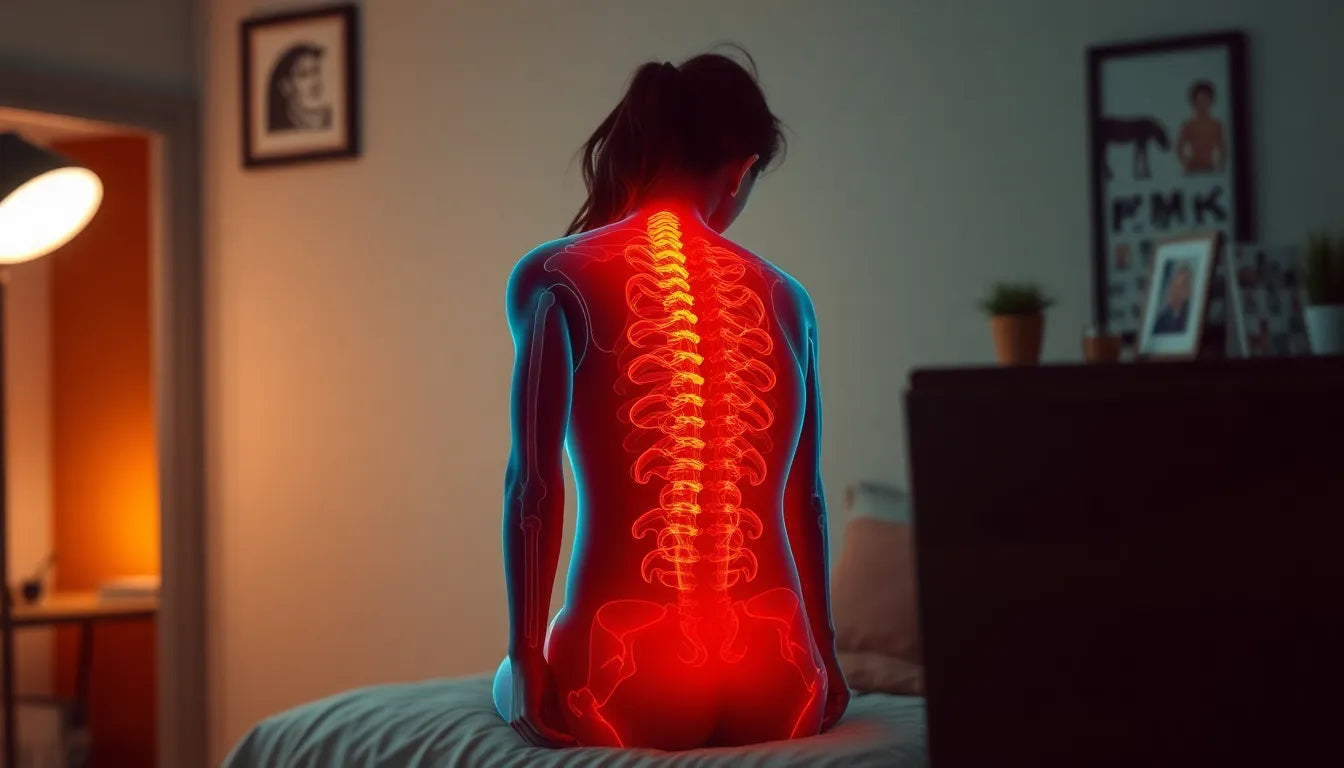Kidney stones, known as "nyresten" in Danish, are a prevalent medical issue that can significantly impact the urinary tract. These hard mineral deposits form inside the kidneys and can cause excruciating pain when they move through the urinary tract. One of the most common symptoms associated with kidney stones is severe back pain, which can often be mistaken for other types of back pain. This misinterpretation can lead to delayed diagnosis and treatment, potentially causing further complications.
Understanding the connection between kidney stones and back pain
Back pain caused by kidney stones is typically intense and sudden, often described as sharp or cramping. Unlike musculoskeletal back pain, which might be due to strain or injury, kidney stone pain is directly related to the movement of the stone within the urinary tract. This pain usually originates in the back or side and may radiate towards the groin as the stone progresses. Recognizing these symptoms is crucial for seeking appropriate medical intervention and avoiding further health issues.
Common misconceptions about back pain
One of the most prevalent misconceptions is that all back pain stems from musculoskeletal problems, such as muscle strain or spinal issues. However, it's essential to consider that some back pain, especially when it is intense and accompanied by other symptoms like changes in urination or nausea, might be related to kidney issues. This distinction is vital for ensuring that individuals seek the correct diagnosis and treatment.
The purpose of this post
This blog post aims to shed light on the connection between kidney stones and back pain, helping readers identify kidney stone-related back pain and explore effective management strategies. By understanding the specific symptoms and differences between kidney-related and musculoskeletal back pain, individuals can make informed decisions about their health and seek timely medical advice. In the following sections, we will delve deeper into identifying these symptoms and discuss various treatment options to alleviate the discomfort associated with kidney stones.
Recognizing the symptoms of kidney stones
When it comes to identifying kidney stones, understanding the symptoms is crucial for timely intervention. The hallmark symptom is a sharp, cramping pain that originates in the back or side, often spreading towards the groin area. This pain can be severe and sudden, distinguishing it from more common musculoskeletal back pain. Alongside this intense discomfort, individuals may experience nausea and vomiting, which can further complicate the diagnosis if not properly understood.
Other notable symptoms include changes in urination patterns, such as increased urgency, frequency, or pain during urination. In some cases, blood may appear in the urine, giving it a pink, red, or brown hue. Additionally, fever and chills can occur if an infection is present alongside the stone. These symptoms collectively signal the need for medical evaluation to confirm the presence of kidney stones and rule out other potential causes of back pain.
Understanding differential diagnosis
Distinguishing kidney stone pain from typical back pain is essential for effective treatment. While musculoskeletal back pain is often linked to physical activity or injury, kidney stone pain is characterized by its sudden onset and severity. The presence of urinary changes and systemic symptoms like fever can further indicate a kidney-related issue rather than a musculoskeletal problem.
Healthcare providers often use imaging tests, such as ultrasounds or CT scans, to confirm the presence of kidney stones and assess their size and location. This diagnostic process helps differentiate between kidney stones and other conditions that may mimic similar symptoms, such as urinary tract infections or other kidney disorders.
Exploring treatment options
Once a kidney stone diagnosis is confirmed, treatment options vary based on the size and location of the stone. For smaller stones, non-surgical approaches are often effective. Increasing fluid intake is crucial to help flush the stone out naturally. Adequate hydration can facilitate the passage of the stone through the urinary tract, reducing discomfort and preventing further complications.
For pain management, nonsteroidal anti-inflammatory drugs (NSAIDs) are commonly recommended. These medications can help alleviate the intense pain associated with kidney stones and reduce inflammation. However, if the stone is large or causing a blockage, surgical intervention may be necessary. Procedures such as ureteroscopy or lithotripsy can be employed to break down or remove the stone, ensuring the urinary pathway is cleared.
Prevention tips to reduce recurrence
Preventing kidney stones from recurring is a vital aspect of long-term management. Given the high recurrence rate, with approximately 50% of individuals experiencing another stone within five years, adopting preventive measures is essential. One of the most effective strategies is maintaining adequate fluid intake. Drinking enough water helps dilute the substances in urine that lead to stone formation, reducing the risk of new stones developing.
Dietary adjustments can also play a significant role in prevention. Limiting salt and animal protein intake, while increasing the consumption of fruits and vegetables, can help regulate the levels of minerals and compounds that contribute to stone formation. Additionally, regular medical check-ups can aid in monitoring kidney health and identifying any early signs of stone development, allowing for prompt intervention.
By understanding the symptoms and treatment options for kidney stones, individuals can take proactive steps to manage their condition effectively. Whether through lifestyle changes, medical treatment, or a combination of both, addressing kidney stone-related back pain can lead to improved health outcomes and enhanced quality of life.

Lumbar support belt
Adjustable belt provides stabilisation and relief for lower back pain.

Men's Posture Shirt™ - Black
Patented shirt stimulates muscles to support posture and reduce tension.
continuation of treatment and prevention strategies
In addition to the treatments and prevention tips discussed, adopting certain lifestyle changes can further reduce the risk of developing kidney stones and the associated back pain. Regular physical activity, for instance, can improve overall kidney function and promote better urinary tract health. Exercise helps maintain a healthy weight, which is important as obesity is a known risk factor for kidney stones.
Another key element is dietary management. Reducing intake of foods high in oxalates, such as spinach and nuts, can be beneficial, as these compounds contribute to stone formation. Incorporating a balanced diet rich in calcium can also help, as calcium binds with oxalates in the gut and reduces their absorption into the bloodstream. However, it's crucial to get calcium from food rather than supplements, as excessive supplement intake can increase stone risk.
Regular medical check-ups are essential for monitoring kidney health and detecting any early signs of stone formation. These appointments allow healthcare providers to perform necessary tests, such as urine analysis, to assess risk factors and provide personalized advice on prevention strategies. By staying proactive and informed, individuals can significantly lower their chances of experiencing recurrent kidney stones.
frequently asked questions
What are the first signs of kidney stones?
The earliest signs of kidney stones often include sharp, cramping pain in the back or side, which can radiate towards the groin. Changes in urination, such as increased frequency or pain during urination, are also common. Some individuals may notice blood in their urine or experience nausea and vomiting.
How can I tell if my back pain is due to kidney stones?
Kidney stone-related back pain is typically intense and sudden, differing from musculoskeletal pain, which is often linked to physical strain. If the pain is accompanied by urinary changes or systemic symptoms like fever, it may indicate a kidney issue. Consulting a healthcare provider for diagnostic tests can confirm the cause.
What should I do if I suspect I have kidney stones?
If you suspect kidney stones, seek medical evaluation promptly. A healthcare provider can perform imaging tests to confirm the diagnosis and recommend appropriate treatment. In the meantime, stay hydrated and take over-the-counter pain relievers if necessary, while avoiding strenuous activity.
Can ergonomic aids help with kidney stone pain?
Ergonomic aids are effective for relieving musculoskeletal pain but do not address the underlying cause of kidney stone pain. Kidney stone pain requires medical treatment to alleviate the symptoms and facilitate the passage of the stone.
How can I prevent kidney stones from recurring?
To prevent kidney stones from recurring, maintain adequate hydration by drinking plenty of water daily. Adjust your diet to reduce oxalate-rich foods and increase calcium intake through food sources. Regular exercise and routine medical check-ups can also help monitor and manage your risk factors effectively.
Kilder
- Helsenorge. (n.d.). "Nyrestein." Helsenorge.
- Molholm. (n.d.). "Nyresten." Molholm.
- Netdoktor. (n.d.). "Nyresten." Netdoktor.
- Aarhus Osteopati. (n.d.). "Nyresten." Aarhus Osteopati.
- Sundhed.dk. (n.d.). "Nyresten - en oversigt." Sundhed.dk.
- Kræftens Bekæmpelse. (n.d.). "Nyrekræft symptomer." Kræftens Bekæmpelse.


















